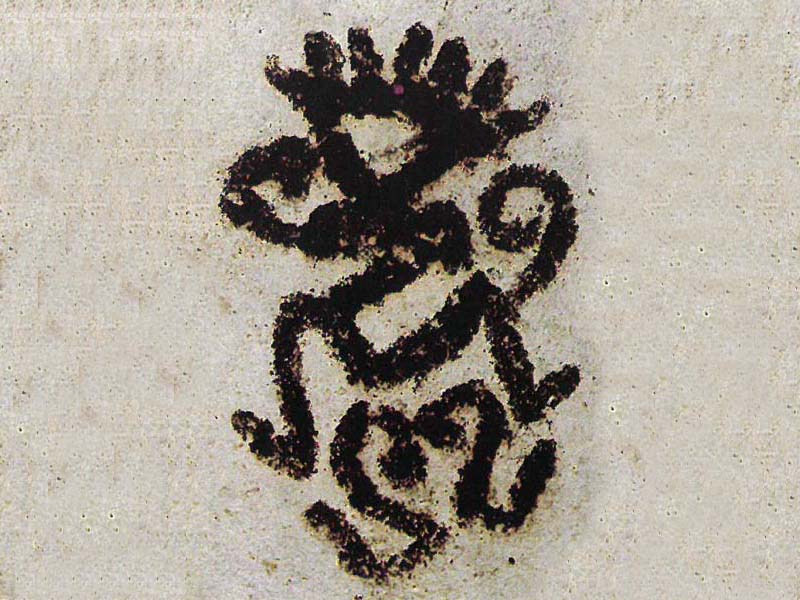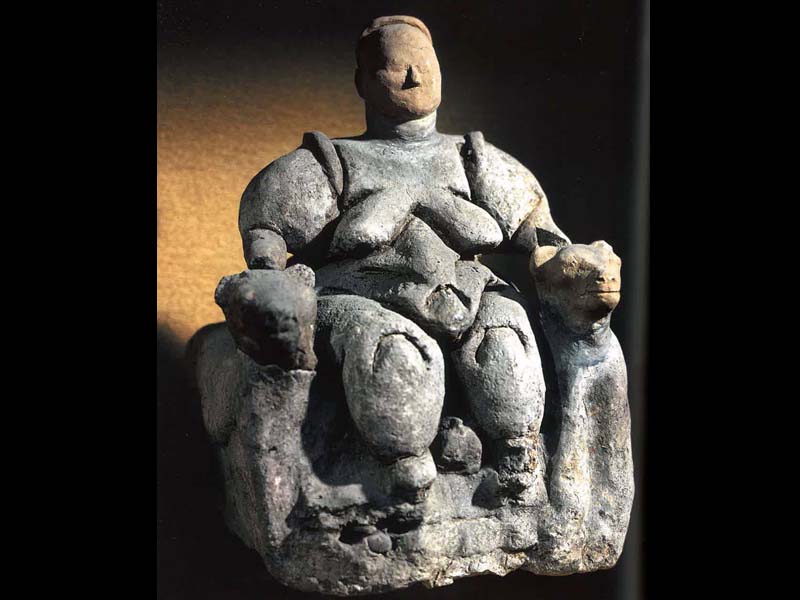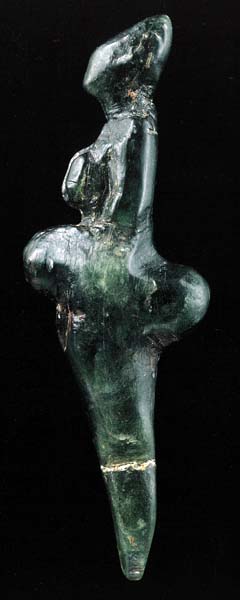Taken from: Anne Baring and Jules Cashford – THE MYTH OF THE GODDESS – The origins: the Paleolithic Mother Goddess – Venexia – October 2017
The first question that arises when analyzing Paleolithic art is why the Mother Goddess was only sculpted, and never painted, on the walls of caves, and what was her relationship with animals, which on the contrary were painted but not sculpted. From the testimonies it is deduced that the visions explored in the Stone Age culture were basically two: one expressed with stone, bones and mammoth ivory, durable materials used to sculpt the figures of the Mother Goddess, chiseled into the structure of the rock or fashioned into figurines at burial sites; the other expressed through painting, on the interior walls of caves, where animals appear alive, the ritual of hunting is dramatized and emphasized, and human and animal shamans offer initiation rites.
From this we can deduce that originally there were not one, but two basic myths: the myth of the Goddess and the myth of the hunter. The pregnant figures of the sculptures suggest that the myth of the Mother Goddess (FIGURE 1) concerned the fertility and sacredness of life in all its aspects, and therefore transformation and rebirth. In contrast, the hunter myth was mostly concerned with the drama of survival, where taking a life was tantamount to a ritual act in order to live. The first story focuses on the Goddess as the eternal image of the whole; the second is based on humanity which, like the hunter, must continually break this unity in order to be able to live everyday life. …
In the Mother Goddess story, the hunter and the hunted animals are both contained in a vision, highlighting a continuum of relationship in which both the hunter and the hunted participate. Thus the myth of the hunter is essentially included in the myth of the Goddess, together with the other aspects of life that are part of the whole. This is the symbolism of the cave paintings, perceived as the womb of the goddess. However, this interpenetration between the myth of the hunter, which concerns the time of mortal life, and the myth of the Goddess is not always recognized. In the myth of the hunter, animals and humans compete for survival, and the life of one often means the death of the other (FIGURE 2). For this reason the two stories are often interpreted in opposition. When this happens, the connection with the invisible dimension, from which life and death come and which gives sanctity to both, is lost. The myth of the Goddess contains the myth of the hunter, and not the other way around.
The presence of the Shaman (FIGURE 3) in the cave indicates that the Paleolithic populations knew well how vital it was for the welfare of the tribe not to forget the essential relationship between these two stories. Shamans mediated between the two worlds of human experience and their flight into the darkness inevitably took place in the most secret part of the cave where the ordinary limits of perception could be transcended. There they could re-member the fundamental relationship between these two myths and honor the essential need to connect hunting with the deepest vision of the whole. Such an interpretation helps explain the strong importance of hunting rites among certain tribes, even today.

In this way the myth of the Goddess expressed what we can call the moral vision of time, a vision that lasted for thousands of years, also thanks to the regulation that took place during the Neolithic of the seasonal cycles of sun and moon, month and year, plant and animal life . However, in the middle of the Bronze Age (c. 2000 BC), with the continuous invasions of the nomadic and warlike tribes of the ancient hunting grounds of the Paleolithic, the myth of the Goddess lost its central role in the moral sentiment of humanity and the connection between the myth of the hunter and the myth of the Goddess weakened and was often lost. …
During the Bronze Age the ancient myth of the hunter transformed into the myth of the hero-warrior coming to obscure the myth of the Goddess, which was gradually relegated to the unconscious, the psyche of humanity. However, we can find the lost myth scattered in the symbolic images, legends and fairy tales of every civilization, frequently misunderstood and often disconnected from each other, but always present. The goddess, and the vision of the whole that she embodies, have not been lost but overshadowed by the pressing claims of the other story: the myth of the hunter and the need to survive.
… Whenever we find the cave, the moon, the stone, the serpent, the bird and the fish; the spiral, the fret and the labyrinth; wild animals (the lion, the bull, the bison, the deer, the goat, the horse); the rites for the fertility of the earth, of animals, of human beings as well as the journey of the soul into another dimension, then we are in the presence of an image that once staged the original myth. They exist as a living testimony, in the human psyche, to the vision of the unity of life, initially imagined as the Mother Goddess who gives rise to the life forms in which she incarnates herself. …
Today's official religious images are predominantly those of a father god who created the heavens and the earth through his word, and who is therefore above his creation, not within it. We are accustomed to a mythological tradition where nature, land, animals, seas, rivers, birds and mountains are not sacred… The idea of the unity and sacredness of life has inhabited the roots of the human psyche for an incredible number of years, much longer than patriarchal religious thinking has, which seems inevitable only because we have experienced – in the conventional mythic images of our time – nothing else. …
We must not assume that the moral order of the Paleolithic died with the end of that Age. …not surprisingly, there are traces of the ancient Goddess myth scattered throughout every religion in the world, remembered or otherwise recreated to explore this particular dream of life on earth. …
From the labyrinthine passages of the Palaeolithic caves to the labyrinth engraved on the floor of the Cathedral of Chartres there is a distance of 25.000 years in linear time, but also an identity as a symbolic figure which annuls the passage of the centuries. …
Taken from: Anne Baring and Jules Cashford – THE MYTH OF THE GODDESS – The origins: the Paleolithic Mother Goddess – Venexia – October 2017




